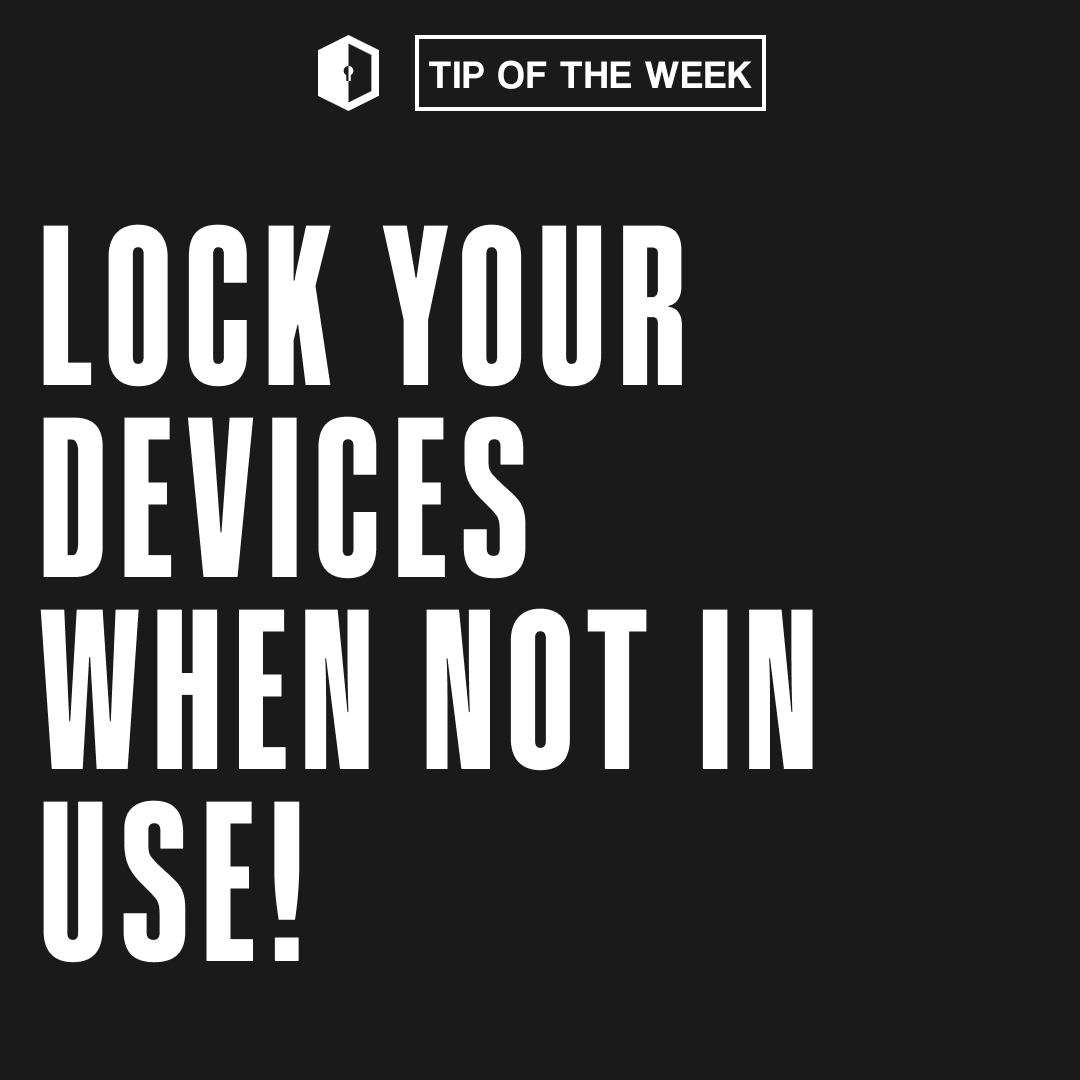🔒 Cyber Safety Tip of the Week: Lock Your Devices When Not in Use! 🛡️📱

An employee in a giant compny steps away from their desk, leaving their device unlocked.
In those brief moments, an unauthorized individual accesses sensitive data, triggering a security breach that compromises critical information. One small oversight, significant consequences. ⚠
What Does Locking Your Devices Mean?
Locking your devices means using security features such as passwords, PINs, biometric locks (fingerprint or facial recognition), or screen locks to prevent unauthorized access when you are not using them.
Why Locking Your Devices is Critical?
Locking your devices helps protect your personal and sensitive information from prying eyes. If your device is lost, stolen, or simply left unattended, anyone could access your emails, contacts, photos, financial information, and more. A locked device is your first line of defense against unauthorized access and potential data breaches.
How to Lock Your Devices:
- Use Strong Passwords or PINs: Create strong, unique passwords or PINs that are difficult to guess. Avoid using easily accessible information like birthdays or simple sequences.
- Enable Biometric Locks: Use fingerprint or facial recognition features available on many smartphones and laptops for added security.
- Set Automatic Lock Timers: Configure your devices to automatically lock after a short period of inactivity.
- Remote Locking Features: Enable remote locking features available on most devices, which allow you to lock your device remotely if it is lost or stolen.
How to Stay Safe:
- Regularly Update Your Security Settings: Ensure your devices are configured with the latest security settings and updates.
- Educate Others: Encourage family members and colleagues to lock their devices when not in use to protect shared data and information.
- Use Secure Lock Screens: Avoid using patterns or simple swipes; opt for more secure locking methods like passwords, PINs, or biometrics.
"Protect your data with a simple action! Always lock your devices when not in use to ensure your personal information remains secure."
Share this tip and help others keep their devices safe from unauthorized access!

